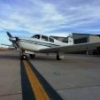When do you turn on your Alternator?
-
Members Online
- Taildraggerpilot
- Bike_rider
- OR75
- oregon87
- Lois
- richardbrochu27
- FlyLateNLife
- traumamed
- Glen Davis
- Jerry 5TJ
- RescueMunchkin
- bhtitle
- jrwilson
- ottorecker
- Guillaume
- Greg Ellis
- 00-Negative
- redbaron1982
- eman1200
- Schllc
- ArrowBerry
- Danb
- whiskytango
- Utah20Gflyer
- EKoS
- rturbett
- Crawfish
- ZentRose
- BrentS
- takair
- kalleh
- Chester
- FlyingScot
- Jake@BevanAviation
- Grumpy
- 231MJ
- MrFritz
- Shadrach
- Aviationist
- UteM20F
- flyinjake
- dzeleski
- BravoWhiskey
- 802flyer


Recommended Posts
Join the conversation
You can post now and register later. If you have an account, sign in now to post with your account.